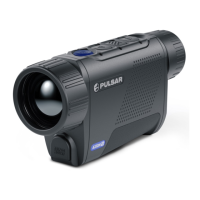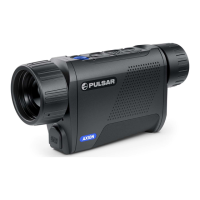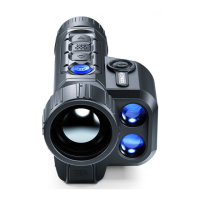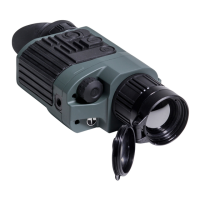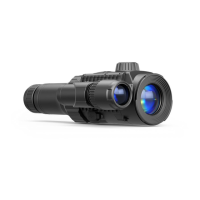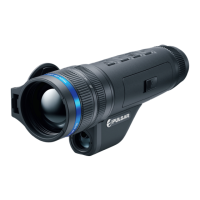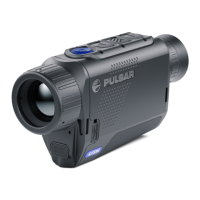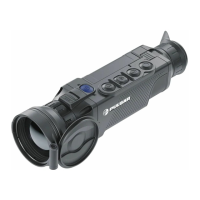11
USER MANUAL FOR KRYPTON XG50 THERMAL IMAGING MONOCULAR
•
Check the eyepiece and the lens and if required remove dust and dirt from the optics (preferably using a
non-contact method). Cleaning of the exterior surfaces of the optics should only be done with products
specically designed for this purpose.
•
Always store the device in its carrying case in a dry, well-ventilated space. For prolonged storage, remove the
batteries.
TROUBLESHOOTING
The table below lists problems that may occur when using the device. Carry out the recommended checks
and troubleshooting steps in the order listed in the table. If there are defects not listed in the table or it is
impossible to resolve the problem yourself, the device should be returned for repair.
Malfunction Possible cause Corrective action
The thermal imager does
not turn on.
The battery is completely
discharged
Charge the battery.
The device does not
operate from an external
power source.
The USB cable is damaged. Replace the USB cable.
The external power supply is
discharged.
Charge the external power supply (if necessary).
Blurred image with vertical
stripes or an uneven
background.
Calibration is required. Perform image calibration according to the
Microbolometer Calibration section of the manual.
Poor quality image. There
is noise or ghost images of
previous scenes or objects.
Manual calibration has been
performed with the lens cover
open.
Check the calibration mode, close the lens cover
and calibrate the device.
Image is too dark. Brightness or contrast level is
too low.
Adjust the brightness or contrast.
Color bars appear on
the display or the image
disappears.
The device was exposed to static
charges during operation.
When the exposure to static charges is over, the
device may either reboot automatically or require
to be switched off and on again.
The image of the object
being observed is missing.
You are looking through glass. Remove the glass or change the viewing position
to avoid it.
Poor image quality /
reduced detection distance.
These problems may occur during observation in adverse weather conditions
(snow, rain, fog, etc.).
Smartphone or tablet
cannot be connected to the
device.
Device password has been
changed.
Delete the network and connect again using the
password saved in the device.
The device is in an area with too
many Wi-Fi networks that may
be causing signal interference.
To ensure a stable Wi-Fi connection, relocate the
device to an area with fewer or no Wi-Fi networks.
Missing or interrupted
broadcasting via Wi-Fi.
The smartphone or tablet is
beyond reliable Wi-Fi range.
There are obstacles between the
device and the signal receiver
(e.g. concrete walls).
Move the devices in line-of-sight and within range
of the Wi-Fi signal.
When the device is used in
low temperature conditions
the image quality is
worse than in positive
temperatures.
In positive temperature conditions, objects being observed (surroundings
and background) heat up differently because of thermal conductivity, thereby
generating a high temperature contrast. Consequently, the image quality produced
by the thermal imager will be better. In low-temperature conditions, objects being
observed (background) will cool down to roughly the same temperature, which
leads to a greatly reduced temperature contrast and a degraded image quality. This
is normal for all thermal imaging devices.
Repair of the device is possible within 5 years.
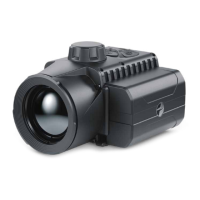
